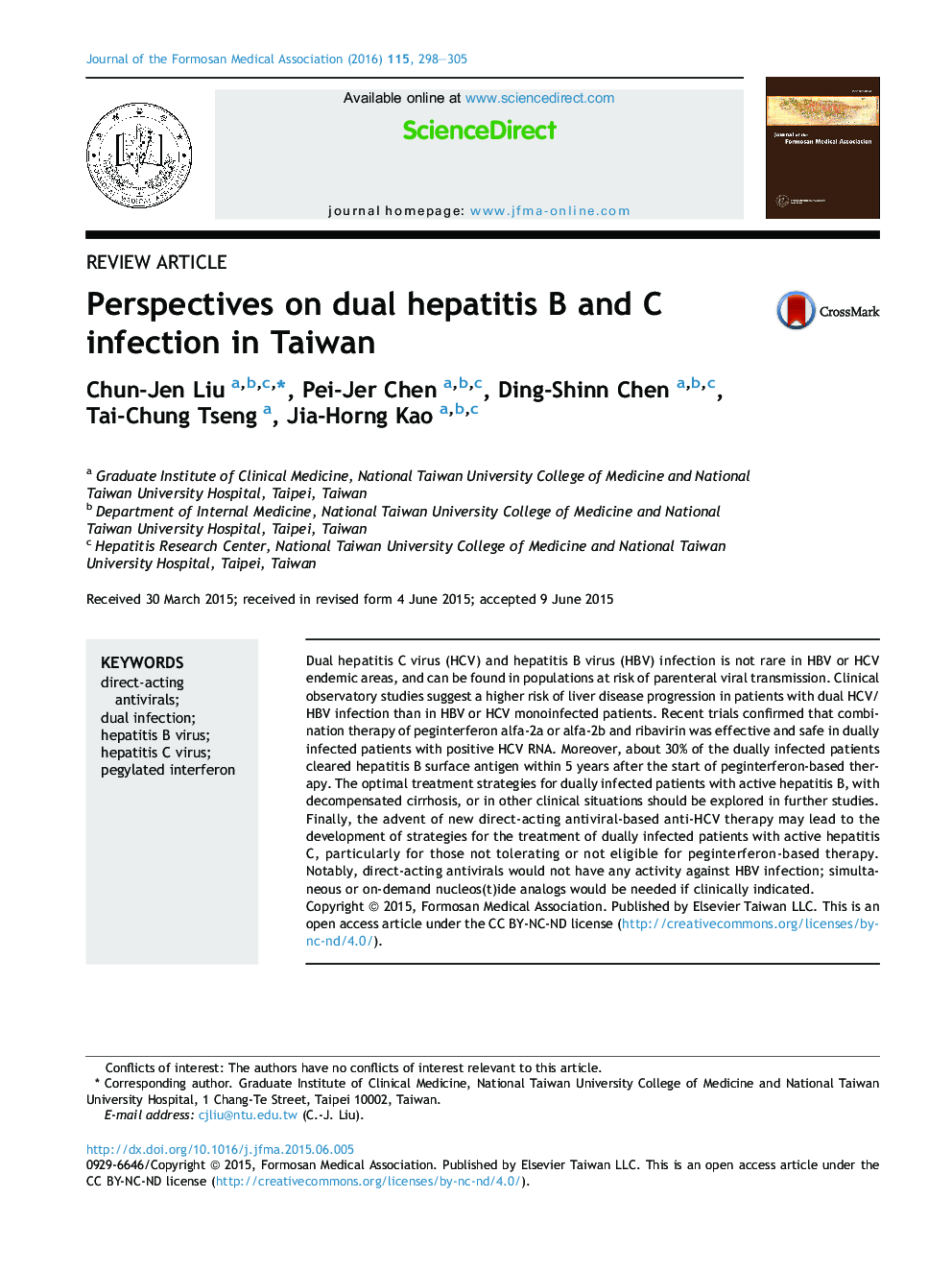| Article ID | Journal | Published Year | Pages | File Type |
|---|---|---|---|---|
| 3478396 | Journal of the Formosan Medical Association | 2016 | 8 Pages |
Dual hepatitis C virus (HCV) and hepatitis B virus (HBV) infection is not rare in HBV or HCV endemic areas, and can be found in populations at risk of parenteral viral transmission. Clinical observatory studies suggest a higher risk of liver disease progression in patients with dual HCV/HBV infection than in HBV or HCV monoinfected patients. Recent trials confirmed that combination therapy of peginterferon alfa-2a or alfa-2b and ribavirin was effective and safe in dually infected patients with positive HCV RNA. Moreover, about 30% of the dually infected patients cleared hepatitis B surface antigen within 5 years after the start of peginterferon-based therapy. The optimal treatment strategies for dually infected patients with active hepatitis B, with decompensated cirrhosis, or in other clinical situations should be explored in further studies. Finally, the advent of new direct-acting antiviral-based anti-HCV therapy may lead to the development of strategies for the treatment of dually infected patients with active hepatitis C, particularly for those not tolerating or not eligible for peginterferon-based therapy. Notably, direct-acting antivirals would not have any activity against HBV infection; simultaneous or on-demand nucleos(t)ide analogs would be needed if clinically indicated.
